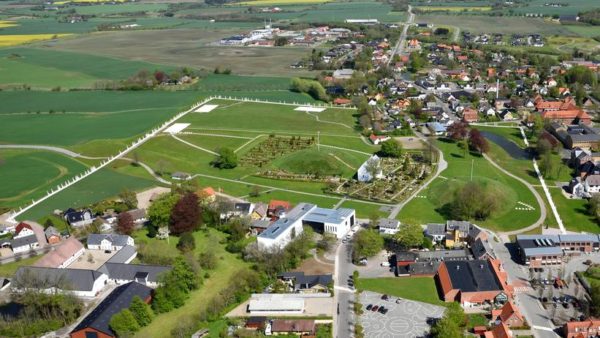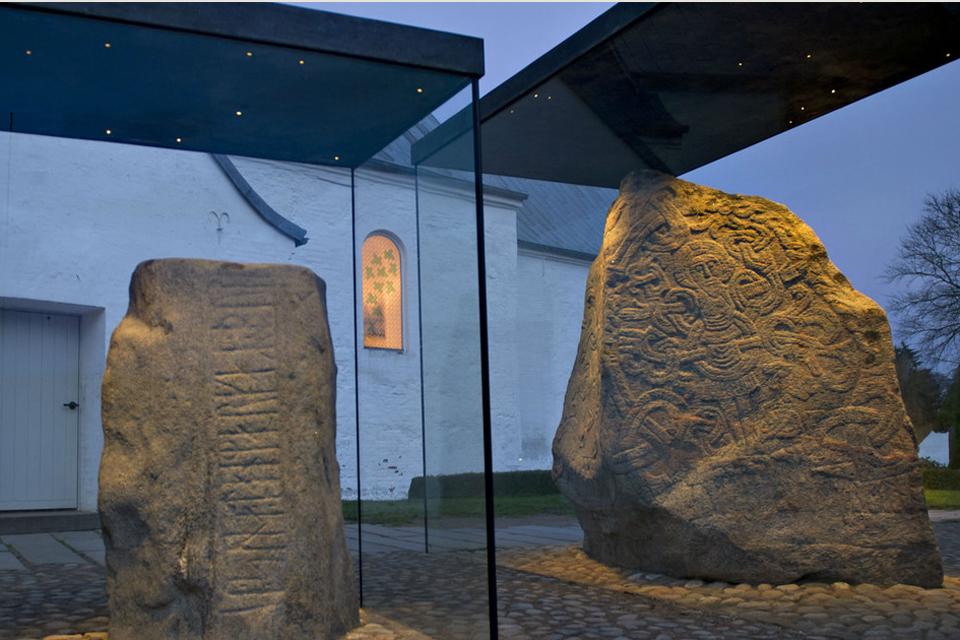Recently, the National Museum in Copenhagen published the report for 2016 – 17 on the progress of the Jelling project, which aims to get a better understanding of the imposing, yet enigmatic monument registered as a UNESCO site

Since 2008 an interdisciplinary group of archaeologists, historians, and scientists have excavated, studied, and pondered upon the meaning of the 10th-century monument in Jelling. Excavated on numerous occasions since 1704, the site has naturally undergone a plethora of different explanations, present project not excluded. The current project has so far succeeded in overturning our understanding by revealing a huge palisade and the outline of the largest ship setting ever discovered in the Viking world.
Currently, the project is laying its final touch upon manuscripts and publications, and we may expect the first volume of the series of three publications sometime next year (hopefully). What we know so far is that the National Museum plans to publish three volumes with the first one telling the story of the monuments and the landscape, the second the story of the Stone Church in Jelling with the third volume focusing on Jelling and Beyond.
The challenge has been that the site turned out to be much more enigmatic than first thought. As such it is a classic example of how preconceived ideas based on archaeological excavations shift when the archaeologists with their leaf trowels widen their scope. Also, the archaeologists had to agree on how to understand the remains of the stave-building beneath the present church with its chamber-grave. Was it an early church as hitherto believed? Or was it “just” a hall? What we may expect is perhaps not a univocal conclusion, but rather the presentation of the arguments, which have been going back and forth. In a sense, though, this feels more satisfying than the “finalized” conclusions, which were offered in the 80s, when the last major excavation took place; and when the remains were univocally identified as the remains of an early church.
More interesting, though, is the “new” knowledge, to which the project has painstakingly sieved its way: by analysing, classifying and counting pollen from the new excavations of the palisade and the small pond nearby, we are promised a better understanding of the landscape and the consequences of the massive depletion of the nearby forests, which the building activities will have caused. To this should be added the detailed examination of a lime-kiln, discovered in 1998, but not studied in details until now.
Royal Jelling
The Jelling monument is arguably one of the most impressive royal monuments, we possess from the Viking Age. In a broader context encompassing the Ravning Enge Bridge and the recent find of the treasure from Fæsted, the study has invited the researchers to explore the region as a landscape marked by royal negotiations of power. How far did this region reach? What role did the fashion of raising runestones tell us about the Jelling dynasty? What role did the dissipation of a particular artistic trend, the Jelling Style – play? How should we understand the relationship between earlier fortified Viking centres as the one in Erritsø from the eighth and ninth centuries and the monument at Jelling from the 10th century? How should we think about Jelling, when comparing it to the Ring Fortresses? Currently, a group of researchers are planning to explore this impressive hall of a magnate in details. Answers to some of these questions will be presented in the scheduled three-volume series. Others will be published in separate scholarly articles.
SOURCE:
READ MORE
While we are waiting:
Earlier publications in the series:
Dead Warriors in Living Memory. A Study of Weapon and Equestrian Burials in Viking-Age Denmark, AD 800 -1000
By Anne Pedersen
Series: Studies in Archaeology & History Vol 20:1 – The Jelling Series.
The National Museum, Copenhagen, 2014
King Harold’s Cross Coinage. Christian Coins for the Merchants of Haithabu and the King’s Soldiers.
By Jens Christian Moesgaard
Publications from the National Museum
Studies in Archaeology and History Vol 20:2. Jelling Series.
Syddansk Universitetsforlag 2015
Husebyer – Status quo, open questions and perspectives. Papers from a Workshop at the National Museum.
By Lisbeth Eilersgaard Christensen, Thorsten Lemm and Anne Pedersen
Studies in Archaeology & History Vol 20.3. Jelling Series.
The National Museum, Copenhagen 2016
